REFERENCES
Readers of the Mrs Bradley series will know that Mitchell enjoys letting her psychoanalyst sleuth refer to infamous figures from actual criminal trials. Constance Kent, the teen who was accused of killing her stepbrother, is mentioned in multiple GM books, and George Joseph Smith, the Brides in the Bath murderer, also appears as a reference (most notably in 1934's Death at the Opera).
Chris calls these additions "deliberately tasteless references to gruesome real-life murder cases that were within the living memory of her first readers." I often wonder about the synergy of sensational crimes and its effect on then-contemporary mystery fiction readers whenever I come across a notation, and Mitchell wasn't alone in this practice. But I never thought of the references as tasteless, but rather as an acknowledgement of a mystery writer's plot inspiration and as a wink to popular true-crime chroniclers of the time, like William Roughhead and Alexander Woollcott, who wrote up other people's tragedies and delivered them in a highly entertaining, compulsively readable format.
But back to Laurels. Chris reports that in Chapter 11, "Mrs Bradley asks her nephew Jonathan to carry an old trunk across the campus for the purpose of comparing two skeletons, [and Jonathan responds] 'Lead on, Patrick Mahon'. This Patrick Mahon was a notorious murderer who in 1924 had killed his girlfriend Emily Kaye, hiding her corpse in a trunk before partially disposing of its dismembered parts. The crime was known as the 'Crumbles Murder', after the Sussex beach near which it was committed."
On a (somewhat?) lighter note, Gladys Mitchell also shows her familiarity with Mark Twain. Joyka shares: "I do like the image of [Laura and her companions] 'parked like Tom Sawyer at the funeral' during their short stint in the gymnasium gallery."
And Chris provides the context for one further illuminating reference. "A stray literary allusion arises in Chapter 14, during Deborah’s Laura-interrupted English lecture, to Richard of Bordeaux by 'Gordon Daviot' (Elizabeth Mackintosh, the Scottish writer better known as 'Josephine Tey'). This was a notably successful 1932 historical play starring the young actor-director John Gielgud." Thanks for connecting the dots, Chris; this is quite an enjoyable nod to a fellow mystery novelist!
RESPONSES
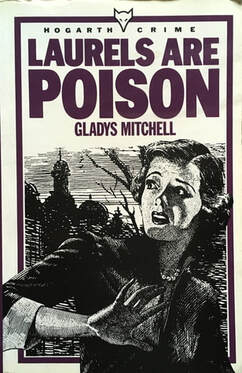
This from Martyn: "In terms of the greater mystery, I find the motives for these crimes and misdemeanors difficult to fathom. Who’s doing them and why? I’ve no idea. There does seem to be a financial (or penury) angle… and the cross-dressing Miss Cornflake appears to be up to her neck in it. But beyond that? All is dark. Fortunately, it’s the characters and the storytelling that keep me hooked."
Tracy's reactions are insightful, and I'm glad that Mitchell's overzealous plotting and eccentric mystery-story logic don't cause her or the other readers to surrender. She also underlines the prime criticism of mystery fans who, after sampling, want nothing to do with the Mrs Bradley series. Readers accustomed to Golden-Age Agatha Christie or Dorothy Sayers or Nicholas Blake expect a serious approach to fair-play clueing, and justifiably so: the genre entices with just such a promise. With her murder mystery storylines, Gladys Mitchell doesn't "cheat" so much as not confine herself to a puzzle logic, especially when a flight of fancy will result in a dynamic scenario.
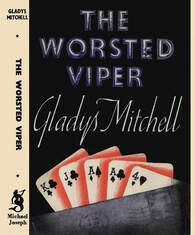
One example of a GM delight? I'm with Martyn, who finds the author's evocative and often humorous turns of phrase – especially as given to her characters – something to celebrate. He writes, "It seems there are three parallel investigations on the go: Mrs Bradley’s, the police’s, and Laura’s. Laura’s has the linguistic verve. I loved her wordplay and her impossibly brilliant analysis of the movements of Mrs Castle’s corsets:
'Can you imagine the cook without them? I bet the murderer gave one goggle-eyed look at the mass of adipose tissue, then took a despairing look at the corsets, decided two into one won’t go, and slung the corsets into the river after the body, never dreaming that they’d fetch up where they did.'
This week the reading group members also took turns celebrating the fast-developing friendship between Mrs Bradley and Laura Menzies. Martyn states that these chapters show "the evolution of Laura into Mrs Bradley's sidekick." I agree; if Laura had not been so resourceful with her own investigations and as quick-acting as a bodyguard in this first appearance, it would be difficult to believe that she impressed the psychoanalyst enough to be offered a job as secretary and Watson. Martyn adds that "they make a formidable duo, and just as well, as there is a marked increase in danger in this section. Revolvers are employed on more than one occasion."
Chapter 13, "Harlequinade and Yule Log", provides a charming montage of scenes where the author, sometimes in just a few paragraphs, orients each of the characters in representative activities over the Christmas break. Alice, for example, rejoins her church choir for some carol-singing, much to the relief of a soprano who thought her college friend would now have airs; George asks leave to visit his sergeant-major from the war; and this is how Kitty updates her mother about the goings-on at Athelstan Hall:
'Ghosts, murder, old Dog nearly getting pneumonia, somebody slashing up coats and breaking open trunks and tins of disinfectant, School Prac., all sorts of rumours that the last Warden disappeared at the end of last term, although some only say she was ill, and…'
'What was that about Laura getting pneumonia, dear?' asked her mother, detaching from this welter of rhetoric the one accessible and assimilable fact.
REALITIES
Which brings us to a theme running through this post: the fictional indulgences that the writer engages in contrasted with the realities of life as we know it. (Or at least the delivery of genre expectations.) This bridging of fact and fiction must to some extent be recognized and honored – especially in mystery stories – or else we would have locked-room teleportation and unconvincing coincidences galore, with no one likely satisfied. I want to use the hoary phrase "suspension of disbelief" here, but I also think this ties back to the question of why a person reads a Gladys Mitchell mystery, if he or she chooses to read one at all. What are they looking for in the experience?
There is stylization, or a sense of unreality, that can be highly rewarding for the reader. Martyn comments that "the courtship of Deborah and Jonathan is pure drawing room comedy." He also argued, persuasively, that the constant entrances, exits, and near misses around the crime scene in The Mystery of a Butcher's Shop (1929) are a knowing attempt at simulating stage farce.
There is also a fact-against-fiction dissonance in the story's geography, as Chris explained to me in his notes for the previous post. He writes, "I’m less than convinced by the topography of the setting. We are suddenly told in Chapter 9 that there’s a small public park next to the Carteret hockey-field. But why would anyone lay out a public park on out-of-town moorland? Who would use it? This is one of those cases (Death at the Opera is another) in which Gladys Mitchell gets so deeply immersed in the intrigues of an institution that she forgets to create a credible environment for it."
The criticisms are completely valid, and they likely frustrate other readers as well. I speak only for myself when I state honestly that such lapses in logic or assaults on pragmatic reality never occurred to me, although they are there on the page for all to see. And joyously, knowing the flaws exist doesn't hamper my enjoyment of a book like Laurels Are Poison. And that is due, I expect, to not how I read Gladys Mitchell's stories but why I read them.
Next week we look at the final four chapters – a slim 40 pages by my count! Thanks to all who have contributed and to all who are reading along with us.
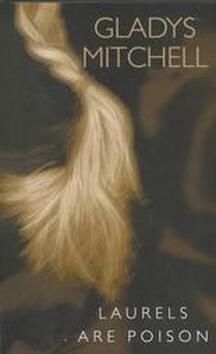
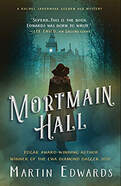
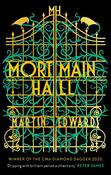
 RSS Feed
RSS Feed